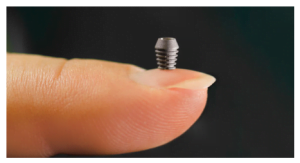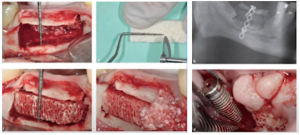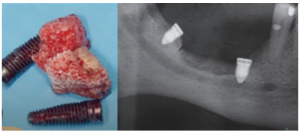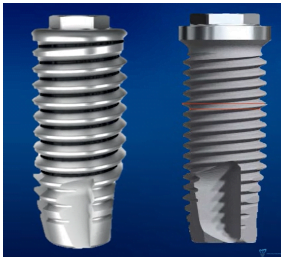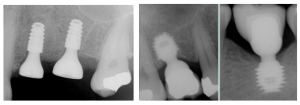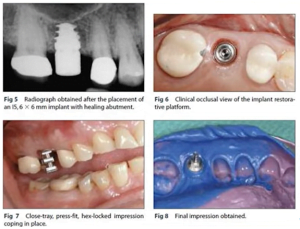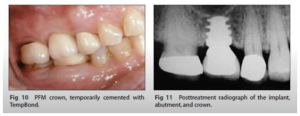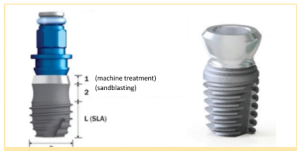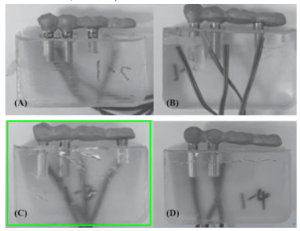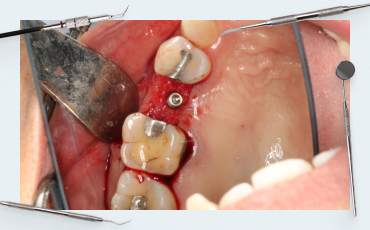Short Implants: for Whom, Why, and When
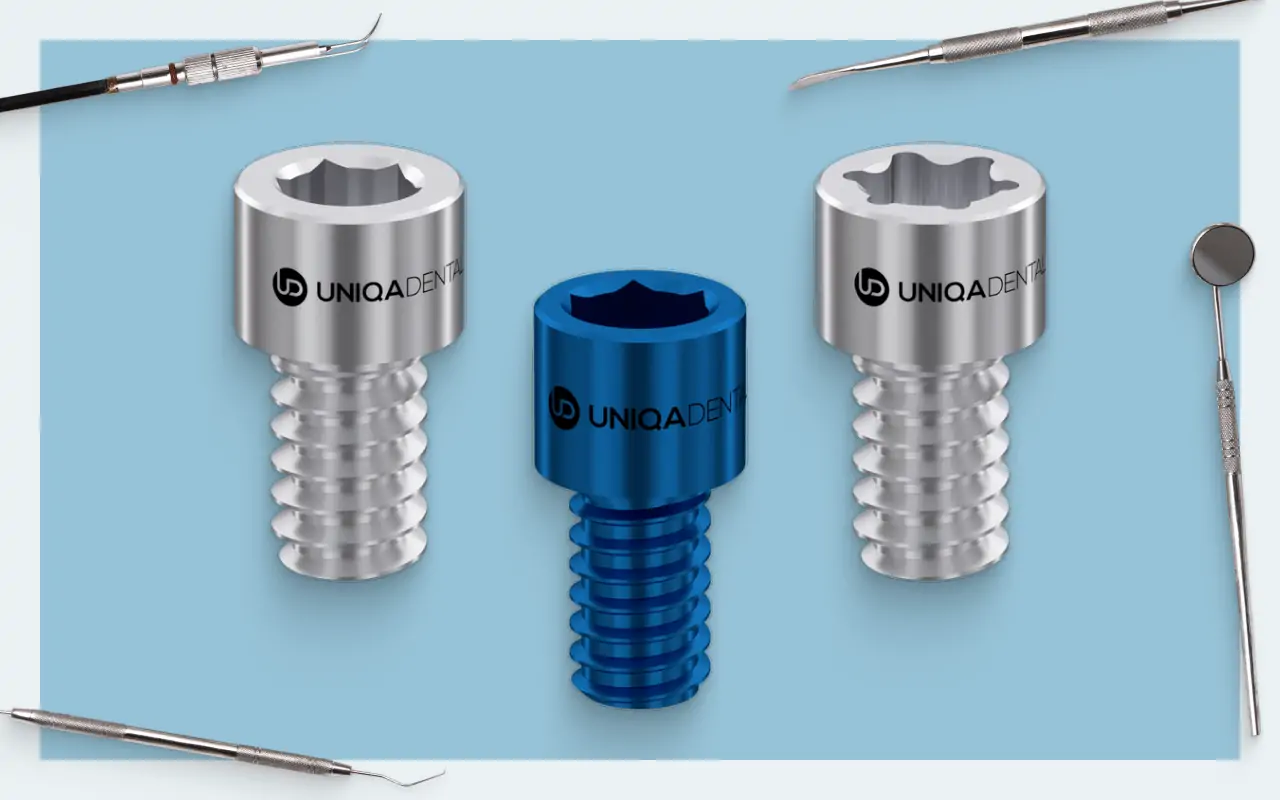
Contents
In this article, we will clarify the features of the short dental implant placement. Namely, under what clinical aspects it is better to place short implants and what is recommended about the depth of implant placing relative to the margin level.
What Implant Dimensions Are Considered to be short
Over time, the definition of a short implant has changed. In the early ‘90s, short implants were considered to be those shorter than 10mm, then shorter than mm. Today, after the ITI Consensus Conference 2018 in Amsterdam, implants with a length of 6mm or less are considered to be short. It was there that the survival rates of short dental implants (≤ 6mm) were compared to models longer than 6 mm. We will refer to the data presented at this conference several times. Furthermore, we also consider the short implant to be ≤ 6mm. The results of the studies we have mentioned earlier also support this classification.
In which the photoelastic models were tested with axial and lateral loads. It was found that maximum loads fall on the top 5-6 turns of the implant thread, with an average thread pitch of 0.8-1mm that is 5-6mm.
Who Needs Short Implants and Why
- The approach to indications is dependent on the individual; there are no absolute and only valid recommendations. However, there are medical cases when a short implant is preferable. Let’s look at the main ones:
Diseases of the upper jaw such as chronic sinusitis, allergic sinusitis, etc. and other patients’ conditions when sinus lifting (increasing the thickness of bone tissue of the upper jaw) is not possible. It is a rather rare problem, but long implant placement is contraindicated. - Major defects in the alveolar crest with a bone deficiency. With a bone deficiency, namely the height of the alveolar crest, the reasonable solution is either otoplasty or placement of short implants. Such problems are most common in the distal lower jaw. In the case of height deficiency of the alveolar crest, specialists apply the method of vertical augmentation. These are complex surgeries requiring the highest level of expertise from the surgeon, and the risk of complications remains high, see photo below.

Not all complications are critical and irreversible. However, for example, in the case of the lateralization of the mandibular nerve (the transfer of the nerve bundle preventing the implant placement), there is a risk of about 20% nerve damage and a complete loss of lower jaw sensitivity. Even if there are no major complications, the patient experiences a long period of severe discomfort and pain. - The patient refuses additional bone augmentation surgery. No matter what the reason for this is, whether it is a fear of complications, financial reasons, or lack of time. It is a really complicated and time-consuming process. As is known with vertical augmentation, it can take a year or more from the first surgery to the implant placement. Not all patients are willing to wait that long, considering the risk of complications. Especially when there is an alternative in the form of short dental implants with minimal risk of complications and chances of survival being greater than 90%.
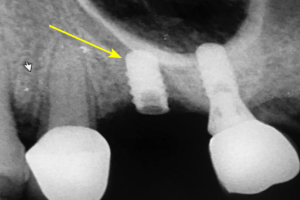
An increasing number of experienced specialists who have previously opted for advanced osteoplasty have decided to use short implants in the same clinical events.
How Reliable Short Implants Are
We will go through the survival rate in detail, but first, we want to look at the cases described by Dr. Marco Esposito. There have been several cases of complications following vertical augmentation. The technique included a xenogenic unit and lifted the alveolar crest by the volume of the said crest to include an additional volume of the xenogenic bone in the jaw, see photo set below.
The problem was the rejection of the xenogenic unit and the loss of even more bone than there was initially. To restore the set of teeth and rehabilitate the patient, it was decided to place short implants on the edges of the affected area, see the photo below.
After a while, specialists were surprised to discover that everything worked perfectly. The dental prosthesis was stable, and the patient had no problems. So the surgery, the long-term rehabilitation, the painful complications and the second surgery were unnecessary. They could immediately decide to place short implants. There is already a lot of that statistic data. We will describe the conclusions from Dr. Marco Esposito’s publication.
Short-term outlook (up to 1 year). Implants with a length of 6mm and a diameter of 4mm show similar and sometimes better results than longer dental implants placed in the augmented bone. Short implants may be recommended as preferred, especially in the distal jaw areas. As such treatment is faster, cheaper, and causes fewer injuries and discomfort for the patient.
In fact, there are publications and studies both in favor of the use of short implants and against them.
For example, this study (see the image below) shows a significant difference in survival: 75-80% for the short, compared to 82-95% for the long. When comparing failure rates, more than 60% of the failures were due to the short implant placement.
However, the rate is influenced significantly by the fact that short implants are placed in more complex medical cases. The rate needs to be adjusted to make the right comparison.
There is another study that draws very different conclusions.
Here there was no significant difference in the rate of survival of long and short implants in the period from 5 to 15 years.
However, this confrontation ended in 2005 with a remarkable meta-study by two French scientists, Renouard and Nisand.
They divided all the results of the previous studies into those received before and after 2000. The point is that after 2000, the use of rough-surface dental implants became widespread. While in the early stages, specialists placed smooth (machined surface) implants.
It turned out that in a group of studies where short implants showed worse results compared to long ones, specialists used implants with a smooth surface. Where there was not much difference in results, they used rough-surfaced implants.
Moreover, French researchers have confirmed the relationship of the short-implant survival rate to the implant surgeon’s skills. Still, working with the 6mm dental implants is not for beginners.
A negative outlook of the short implant survival rate is also related to bone quality. For the implant to be healed in Class D3 and D4 bones, the implant length is important. It is the length that provides getting good initial implant stability and, therefore, a good chance of survival. However, when osteoplasty is not possible and bone deficiency prevents long implant placement, it is recommended to place short implants with a large diameter of 5.5mm or more. Even though the risk of failure increases, the chances of a successful restoration are still quite high.
What Design Is Suitable for Short Implants
The short dental implants in the images below are placed in a subcrestal way. That is, below the level of the alveolar crest. This is reasonable and is due to the fact that in about a year, bone tissue around the implant partially loses 0.8-1.2mm. Subcrestal placement is required so that the entire body of the dental implant is in a dense bone structure and serves as support.
What if the bone height is very small, just 5- mm, and it is not possible to place the implant by 1.2 mm in a subcrestal way.
The images below show exactly this. Initially, there was a reserve of 7mm bone. An implant with a diameter and length of 6mm (6×6) was placed. As can be seen from the image, it almost reached the border of the maxillary sinus. All is okay in the first image. A crown was placed and a set of teeth was restored.
However, the second image, taken a year later, showed a loss of bone around the implant. In this case, about 5mm are reliably integrated into the bone. This, actually, is enough considering the secondary stability and successful osseointegration.
What if the reserve is even smaller in height. Of course, you can place the implants at an angle and then use an angled abutment, but in the case of a single implant, that is not possible.
We have already found out that short implants are necessary for bone deficiency in height. The images above show that a short implant of a regular design for a subcrestal placement may not always provide sufficient stability.
The solution may be dental implants of a design for transgingival placement (the implant reaches the margin level), see the figure below.
Implants of this design are made for one-stage surgery, and the upper part is similar in structure to a healing cap, which is used in platforms of regular two-stage surgery. As you can see from the X-ray images, implants of this design are placed without forming a hole in the cortical bone, which means they provide for better stability even when they are only 4-5mm deep in the bone.
The successful use of short implants at the margin level is proved by statistics. In the studies that we have already mentioned, there were minimal problems when dental implants of this particular design were used.
However, we would not recommend the implant placement at margin level in all cases. The point is that they require particular experience and skills. In general, implants of this design are more difficult to place. When you have a bone reserve of 7-9mm and more, it is better to use the regular dental implant design for the subcrestal placement.
How to Prosthetic on Short Implants
The crux of the matter is how to distribute the load and ensure good stability and survival of dental healing.
- It is necessary to splint (bind the crowns together). This helps to avoid point overloads, especially lateral ones. We have a separate article about the advantages of splinting compared to single implant placement. In short, structures for splinting have much fewer mechanical complications such as screw fractures, etc.
- Avoid placement of a single implant whenever you can place at least two implants and bind the crowns.
- Try to always place the support implant, avoid “hanging” cantilevers. See the figure below. On this load distribution model, the best option is marked with the letter C.
We hope you found the material in this article useful and that you better understand when it is recommended to use short implants. ‘Till the next article.


